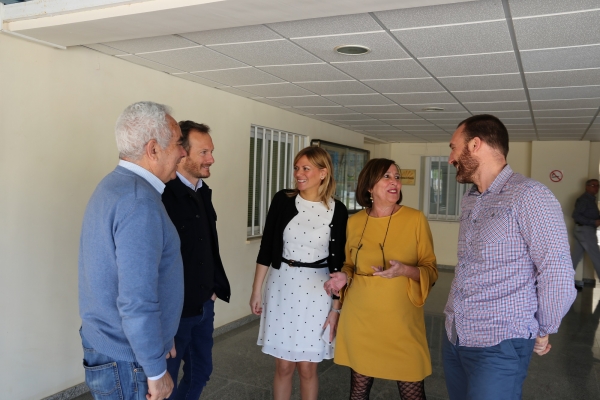Â
In a world in which citizens are increasingly conscious of what they consume, and the environmental and social implications of their decisions, ensuring the traceability of what ends up on tables is essential to ensure the success of any product.
The University of Cordoba's ETSIAM Agro-livestock Production Systems Engineering research group is working to meet this challenge. Professor Lola Pérez Marín and Dr. Francisco Maroto, under the auspices of the European ShareBeef project, are coordinating the inclusion of the technological advances offered by the Internet of Things and Blockchain into the beef production chain: from sowing the forage to the final product on plates. Professors Ana Garrido, José Emilio Guerrero and Carlos Pérez also participate in the project.
The inclusion of these technologies arose in response to dual challenge. First, by introducing sensors that monitor livestock, productive efficiency is increased in terms of resource management. By having data on the animals at all times (weight, nourishment...) decision-making is more fine-tuned and efficient, reducing supply expenses. Also, through monitoring reliable data can be offered to the final consumer, who can be assured that the animals have been eating grass for a time, instead of feed, that animal welfare guidelines have been observed, and that they have been bred in nearby areas. The traceability and transparency of the chain is thereby ensured, adding value to the final product, and resulting in enhanced satisfaction for consumers and ranchers.
This system of guarantees is made possible through a combination of positioning and activity sensors placed on animals' collars and bells, smart scales for continuous monitoring at the trough, sensors measuring conditions during transport, etc., while Blockchain technology allows for a reliable and incorruptible database. This technology, designed for economic transactions, is based on database systems distributed across different nodes in which changes to data are recorded and must be accepted by all participants. In this way, the transparency of the system is optimised, and its encryption increases security. While Blockchain safeguards the database, the sensors ensure that the data on which the traceability is based is objective.
This project, which is part of the Internet of Food & Farm 2020 (IoF2020) programme, constitutes a case study in which precision agriculture companies, technologies and researchers create networks functioning towards a common goal: to bolster the value of the beef production chain through the promotion of a technological framework.
The UCO is responsible for managing the pilot projects that will be deployed across 6 European countries: Spain, Portugal, Italy, Bulgaria, Croatia and Ireland. In addition, due to their expertise as domain experts, project managers will interpret sensor data, from the biological perspective, and with a view to the design of features to support the value chain, in this way adapting the technology to meet the needs of ranchers and the other actors across the chain.
The ETSIAM-UCO research group is working at the same time as the technology development companies Agricolus, Digitanimal and Applifarm, and the meat producer Natrus. The latter covers all the steps of the chain, from the cultivation of the corn that serves as food, to the production of the hamburgers that found on the shelves of major supermarkets. In this way a case study is carried out in which all the links of the chain are integrated, increasing the connection between them, and boosting efficiency.
Efficiency in supply use, thanks to digitalization and the dignification of ranching, made possible by the application of technology, have an impact on the environment, and on society: while supplies are reduced, young people are also encouraged to opt for work in the rural sphere, through their incorporation into a more sustainable form of livestock activity.


